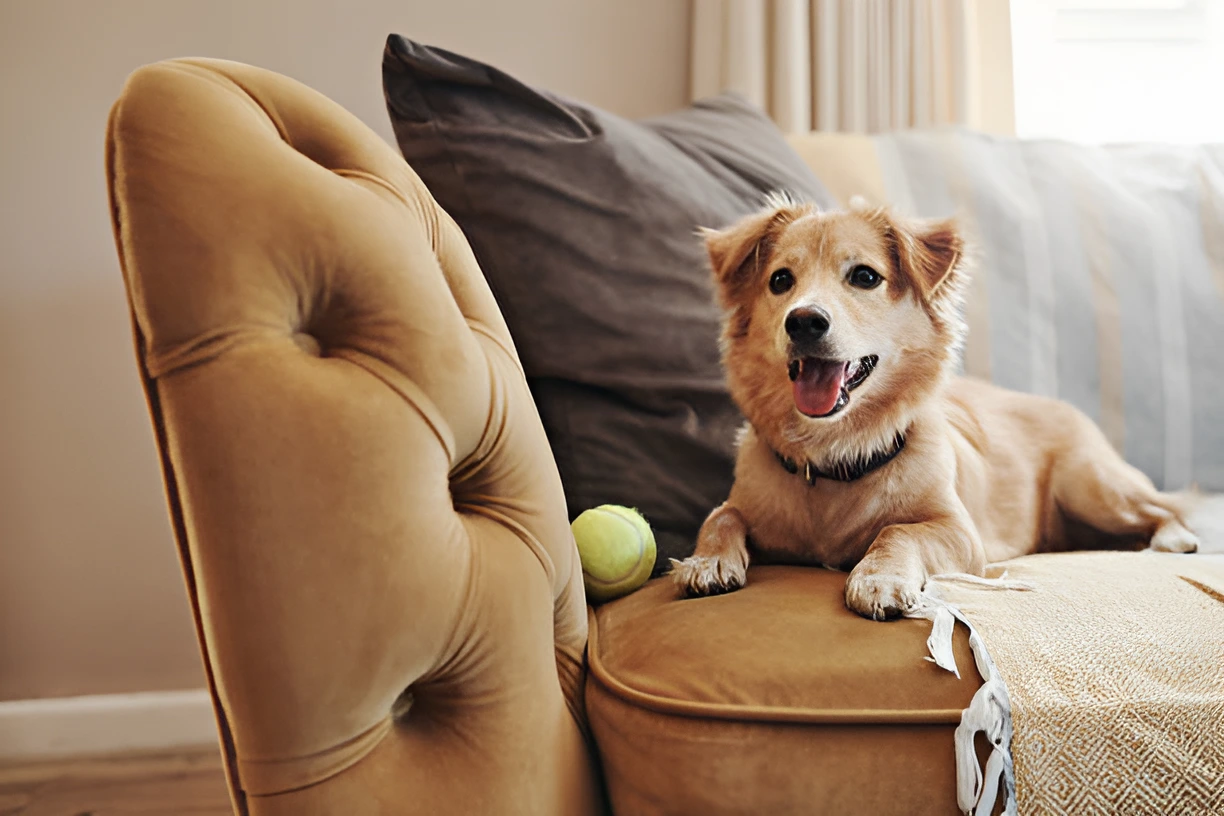Dogs are most confused by colors like red and green, as they perceive these colors as shades of gray or brown. Dogs see the world differently than humans do. While humans have trichromatic vision, meaning we see three primary colors (red, green, and blue), dogs have dichromatic vision. This means they see the world primarily in shades of blue and yellow. Understanding how dogs perceive color can help us better interact with them, choose appropriate toys, and even train them more effectively. In this comprehensive guide, we will explore the science behind canine color vision, the colors that confuse dogs, and practical tips for enhancing your dog’s environment.
The Science Behind Canine Color Vision
Dogs’ eyes contain two types of color-detecting cells called cones, compared to the three types found in human eyes. This difference significantly impacts how dogs perceive colors.
1. Dichromatic Vision: Dogs have dichromatic vision, which means they can distinguish between blue and yellow but have difficulty differentiating between red and green.
2. Cone Cells: The two types of cone cells in dogs’ eyes are sensitive to blue and yellow wavelengths of light. This limited color perception is similar to red-green color blindness in humans.
3. Rod Cells: Dogs have a higher number of rod cells, which are responsible for detecting light and motion. This adaptation allows them to see better in low light conditions and detect movement more effectively.
Colors That Confuse Dogs
- Red and Green: Dogs cannot distinguish between red and green. These colors appear as shades of gray or brown to them.
- Orange and Yellow: While dogs can see yellow, they may confuse orange with yellow due to the similarity in hue.
- Purple and Blue: Purple is often perceived as a variation of blue, making it difficult for dogs to distinguish between the two.
Practical Implications for Dog Owners
Understanding how dogs perceive color can significantly enhance their quality of life and your interactions with them. Here are some practical tips:
1. Choosing Toys: Select toys in shades of blue or yellow, as these colors are more vibrant and easily distinguishable for dogs. Avoid red or green toys, as they may blend in with the environment and be harder for your dog to see.
2. Training Tools: Use blue or yellow training tools and equipment to ensure your dog can easily see and respond to them.
3. Home Environment: Consider the color of your dog’s bedding, bowls, and other accessories. Opt for colors that are easy for them to see and differentiate.
Enhancing Your Dog’s Environment
- Visual Stimulation: Provide a variety of toys and objects in colors that your dog can see well. This can help keep them engaged and mentally stimulated.
- Contrast: Use contrasting colors to make objects stand out. For example, a blue toy on a yellow background will be more visible to your dog than a red toy on a green background.
- Safety: Ensure that important items, such as water bowls and beds, are in colors that are easily visible to your dog to prevent accidents and confusion.
Training Tips for Dogs with Dichromatic Vision
- Consistency: Use consistent colors for training tools and commands. This helps your dog associate specific colors with certain actions or behaviors.
- Positive Reinforcement: Reward your dog with treats and praise when they correctly respond to visual cues. This reinforces their learning and helps them understand the association between colors and actions.
- Adaptation: Be mindful of your dog’s color perception when designing training exercises. Use colors they can see well to avoid confusion and frustration.
Health Considerations
1. Eye Health: Regular veterinary check-ups are essential to monitor your dog’s eye health. Conditions such as cataracts and retinal degeneration can affect their vision.
2. Diet and Nutrition: A balanced diet rich in antioxidants can support eye health and overall well-being. Consult your veterinarian for dietary recommendations.
3. Environmental Adjustments: Make adjustments to your home environment to accommodate any vision impairments your dog may have. This can include using non-slip mats and ensuring pathways are clear of obstacles.
Conclusion
Understanding how dogs perceive color can greatly enhance your interactions with them and improve their quality of life. By choosing appropriate toys, training tools, and home accessories, you can create a more engaging and safe environment for your dog. Remember, every dog is unique, so always pay attention to your dog’s specific needs and adjust your approach accordingly.
The photo featured below the post headline is Credit: PeopleImages/istockphoto
I hope you find this post helpful and informative. If Yes’ feel free to share it with your friends!
Frequently Asked Questions
What colors can dogs see best?
Dogs see blue and yellow best. These colors appear more vibrant and are easily distinguishable for them.
Why can’t dogs see red and green?
Dogs have dichromatic vision, meaning they only have two types of color-detecting cones. This limits their ability to distinguish between red and green, which appear as shades of gray or brown.
How can I choose the best toys for my dog based on their color vision?
Choose toys in shades of blue or yellow, as these colors are more visible to dogs. Avoid red or green toys, which may blend in with the environment.
Can dogs see in the dark?
Dogs have a higher number of rod cells in their eyes, which allows them to see better in low light conditions and detect movement more effectively.
How can I make my home more dog-friendly based on their color vision?
Use contrasting colors for important items like water bowls and beds to make them more visible. Provide a variety of toys in colors your dog can see well to keep them engaged.

